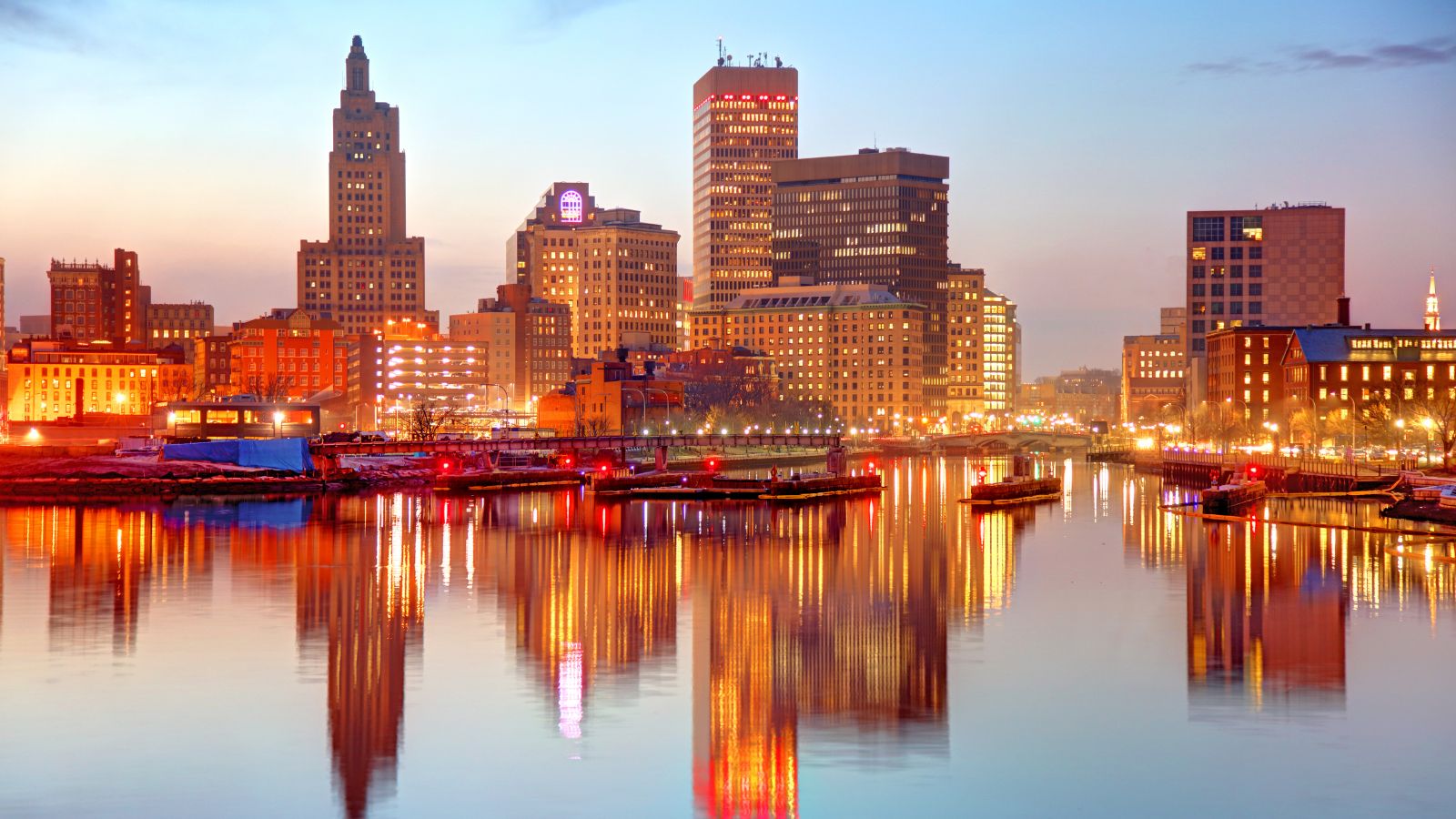Discovering Rhode Island: A Comprehensive Guide to the Ocean State
Rhode Island, the smallest state in the United States, presents a unique blend of New England charm and coastal grandeur. Known affectionately as the Ocean State, this area boasts an intriguing history, vibrant culture, and an array of picturesque landscapes. From its bustling cities to serene coastal towns, Rhode Island offers a diverse array of experiences for residents and visitors alike. This guide delves into the various facets of Rhode Island, exploring its rich history, dynamic lifestyle, thriving real estate market, quality educational institutions, distinct climate, and accessible transportation options. Join us on a journey through the hidden treasures and prominent highlights of this enchanting state.

The Tale of Rhode Island's History
Rhode Island’s history begins with the Native American tribes of the Wampanoag, Narragansett, and Niantic, who faced significant challenges upon European contact. The state’s colonial narrative started with Roger Williams, who founded Providence in 1636 as a bastion of religious freedom after being exiled from Massachusetts. This ethos of liberty attracted other dissenters like Anne Hutchinson, leading to the formation of settlements like Portsmouth and Newport. The unified Colony of Rhode Island and Providence Plantations chartered in 1663, was a pioneering model of self-governance and religious tolerance.
Rhode Island played a pivotal role in the American Revolution, being the first colony to declare independence in 1776 and actively participating in events like the HMS Gaspee attack. Post-revolution, the state spearheaded the American Industrial Revolution with the establishment of the first textile mill by Samuel Slater in Pawtucket in 1790, ushering in a time marked by swift industrial growth and expanding urban development, particularly in textiles, machine tools, and jewelry.
During the Civil War, Rhode Island supported the Union with troops and industrial resources, subsequently advancing in urban infrastructure and health. The post-war Gilded Age marked a time of prosperity, with the state becoming a hub for manufacturing and attracting a surge of immigrants. This period also saw a concentration of political power among elite families and the Republican Party.
The 20th century ushered in a significant shift with the “Bloodless Revolution” of 1935, transitioning political dominance from the Republicans to the Democrats, a trend that has persisted. Through these eras, from indigenous settlement to colonial struggles, revolutionary fervor, industrial prowess, and political shifts, Rhode Island’s history is a testament to resilience and innovation, shaping it into a unique and dynamic state.
Homes for Sale
The Rhode Island Lifestyle
Rhode Island, despite its small size, offers a rich and diverse lifestyle that reflects its unique New England character and coastal charm. Known as “Little Rhody,” it’s the second most densely populated state in the U.S., attracting around 2,000 new residents each year. The state’s religious landscape is notable, with a high percentage of Catholics and historical roots in religious tolerance, as seen in its oldest Synagogue in North America and the First Baptist Church in Providence.
Rhode Islanders are known for a somewhat reserved personality, typical of New England, and the state leans Democrat, though many hold conservative views on social issues. The compactness of Rhode Island means everything is within a short distance, enhancing its appeal. It’s home to prestigious educational institutions like Brown University and the Rhode Island School of Design, contributing to a well-educated population.
The state thrives in the summer, with its beautiful beaches along the Atlantic Coast becoming hubs of activity for sunbathing, surfing, and sailing. The T.F. Green Airport in Rhode Island is renowned for its convenience, offering easy travel options. However, the cost of living, including property prices and daily expenses, is higher than the national average, and the state faces challenges like overcrowding, especially during tourist-heavy summer months, and traffic congestion.
Rhode Island’s cultural life is vibrant, with a sense of small-town familiarity across its population. Summer is particularly lively, with numerous festivals and events and an atmosphere that is both welcoming and warm. The state’s calendar is packed with fairs and festivals, including food events celebrating local seafood, arts festivals, music events like the famous Newport jazz and folk festivals, and unique experiences like WaterFire in Providence, an event featuring nearly 100 bonfires on the city’s three rivers.
This blend of cultural richness, educational prestige, and natural beauty, combined with the challenges of high living costs and population density, paints a picture of a state that is as multifaceted as it is compact. Rhode Island offers a unique lifestyle experience shaped by its history, natural landscapes, and vibrant community spirit.
Premier Neighborhoods in Rhode Island
Rhode Island, though compact, is home to a diverse array of neighborhoods, each offering its unique charm and appeal. From the bustling streets of urban centers to the tranquil lanes of seaside towns, the state’s neighborhoods cater to a wide range of preferences and lifestyles. Here, we explore five of the most highly sought-after neighborhoods in Rhode Island, showcasing what makes each one a coveted place to live.
East Side of Providence: Nestled within Rhode Island’s capital city, the East Side of Providence is recognized for its rich history, stunning architecture, and vibrant cultural scene. This neighborhood is a blend of urban living with a quaint community feel. The streets are lined with historic homes, local boutiques, and a variety of restaurants. The proximity to Brown University and the Rhode Island School of Design adds a youthful and intellectual vibe to the area. The neighborhood also boasts ample green spaces, including the scenic Blackstone Boulevard and Roger Williams Park.
Newport’s Ocean Drive: Ocean Drive in Newport offers a picturesque coastal living experience. Known for its breathtaking ocean views, luxurious homes, and historic landmarks, this area is a favorite among those seeking a serene and upscale lifestyle. Ocean Drive is famous for its Gilded Age mansions, scenic Cliff Walk, and vibrant yachting culture. The neighborhood’s close-knit community and leisurely pace of life make it an ideal spot for those looking to enjoy the finer aspects of Rhode Island living.
Barrington: Barrington, often celebrated for its top-rated schools and family-friendly atmosphere, is a suburban haven. It’s a neighborhood that blends small-town charm with the convenience of being close to Providence. The community is known for its beautiful parks, recreational facilities, and buzzing town center with shops and eateries. The East Bay Bike Path, running through Barrington, offers a scenic route for cyclists and walkers alike. This neighborhood’s appeal is further enhanced by its commitment to quality education and community engagement.
Wickford Village, North Kingstown: Wickford Village in North Kingstown is a hidden treasure, offering a glimpse into Rhode Island’s colonial past. This neighborhood is characterized by its well-preserved historic buildings, waterfront vistas, and a thriving arts community. The walkable village center is home to charming boutiques, art galleries, and cozy cafes. Wickford’s marinas and water activities embody the quintessential Rhode Island maritime lifestyle, making it a desirable location for those who love the sea.
College Hill, Providence: College Hill is not just the educational heart of Providence but also a neighborhood steeped in historical significance and architectural beauty. As the home to prestigious institutions like Brown University and the Rhode Island School of Design, College Hill is a vibrant, intellectual hub. The neighborhood features a mix of colonial-era homes and modern apartments, with tree-lined streets and stunning city views. Thayer Street, a bustling thoroughfare, offers an eclectic mix of shops, restaurants, and entertainment venues catering to both students and residents.
Each of these neighborhoods in Rhode Island offers a unique lifestyle steeped in the state’s rich history and natural beauty. Whether you’re drawn to the urban sophistication of Providence, the historic charm of Newport, or the serene coastal ambiance of Wickford Village, Rhode Island has a neighborhood that will feel like home.
Educational Landscape in Rhode Island
Rhode Island’s education system, encompassing K-12 and higher education, focuses on nurturing the potential of every student, emphasizing academic, social, and emotional growth. The state aims to create world-class talent, excellence in learning, and engaged communities.
The public school system in Rhode Island is committed to academic proficiency and holistic development. Notable schools include East Greenwich High School, Community School, and Barrington High School. The Barrington and North Kingstown districts are particularly recognized for their high-performing schools.
Rhode Island’s private school network is extensive, with The Croft School and St. Raphael Academy standing out among the top-ranked institutions. These schools offer diverse educational environments and curricula, catering to a significant portion of the state’s K-12 students.
The higher education landscape comprises 13 accredited institutions, including research universities, a community college, and specialized schools. Prominent public universities are the University of Rhode Island and Rhode Island College. The oldest institution is Brown University, an Ivy League university, while the newest is College Unbound, a degree completion school in Providence.
Rhode Island’s education system is committed to high-quality education and the development of well-rounded individuals, preparing students for modern societal challenges.
Rhode Island's Four Seasons: A Climate Overview
Rhode Island, with its New England charm, experiences a climate with notable seasonal variations. The state enjoys an average of 202 sunny days annually, while precipitation, including rain, snow, sleet, or hail, occurs on about 124 days each year. The average annual snowfall varies significantly across the state, from about 20 inches on Block Island to about 40 to 55 inches in the western region.
In spring, Rhode Island begins to thaw from the winter chill. The average high temperature in April is around 58 degrees Fahrenheit, while the average low hovers near 39 degrees. This season is marked by a mix of rain and the last remnants of winter snow, leading to a refreshing transition into warmer weather.
Summer brings warmth and humidity, with July’s average high reaching about 82 degrees and nights cooling down to an average low of 63 degrees. The proximity to the ocean often brings cooler breezes to coastal areas, making it a perfect time for beach activities and outdoor festivals.
Fall in Rhode Island is a picturesque season characterized by colorful foliage and crisp air. Average high temperatures in October are around 62 degrees, with lows near 44 degrees. This comfortable weather is ideal for exploring the state’s natural beauty and outdoor attractions.
Winter is cold and snowy, especially in the inland and western parts of the state. January sees average highs of around 37 degrees and lows dipping to about 20 degrees. Snowfall during this season transforms the landscape into a winter wonderland, offering opportunities for various winter sports and activities.
Overall, Rhode Island’s climate presents a diverse and ever-changing backdrop to the state’s rich cultural and natural offerings. From warm, sunny beaches in the summer to snow-covered hills in the winter, the state’s weather patterns add to its unique appeal and attract visitors and residents alike year-round.
Navigating the Ocean State: Transportation in Rhode Island
Rhode Island, though the smallest state in the United States, boasts a comprehensive transportation network that mirrors its rich history and dynamic culture. This intricate system of transport facilitates the movement of people and goods across the state, linking its vibrant cities and charming towns. From bustling highways to efficient public transit options and from the skies above to the maritime routes, Rhode Island offers a range of transportation modes catering to the needs of residents and visitors alike.
At the heart of Rhode Island’s transportation network are its major interstates, providing crucial links both within the state and to the broader New England region. Interstate 95, the primary north-south artery, traverses the state, connecting Providence to major cities like Boston and New York. Interstate 195 serves as a vital east-west route, offering access to the East Bay and Massachusetts. The state’s infrastructure also includes an impressive array of bridges, like the iconic Claiborne Pell Newport Bridge, which not only serve as critical connectors but also stand as engineering marvels. These roads and bridges are constantly maintained and upgraded to ensure safety and efficiency, reflecting Rhode Island’s commitment to a robust and reliable transportation infrastructure.
Public transportation in Rhode Island is anchored by the Rhode Island Public Transit Authority (RIPTA), operating bus services throughout the state. These buses connect major urban centers, suburban communities, and even rural areas, making public transit a viable option for a significant portion of the population. Additionally, the state benefits from commuter rail services, including the MBTA Commuter Rail, which links Providence and other key locations to Boston. The emphasis on public transportation promotes environmental sustainability, reduces traffic congestion, and provides affordable and accessible travel options, especially for those commuting to work or school in the urban centers.
For long-distance travel, Rhode Island is served by the T.F. Green Airport, located just south of Providence in Warwick. This international airport offers a range of domestic and international flights, acting as a gateway between Rhode Island and destinations across the globe. The airport’s recent expansion and modernization have enhanced its capacity and efficiency, making air travel more accessible and enjoyable for passengers. Smaller regional airports, like the Block Island State Airport, also play a crucial role in connecting the state’s more remote areas, further showcasing the state’s commitment to comprehensive transportation solutions.
Discover Your Perfect Home in Rhode Island
As we conclude our exploration of Rhode Island, it’s clear that this small state is overflowing with big offerings. From its rich history that has shaped the very foundations of its cities and towns to the diverse and vibrant lifestyles that its unique neighborhoods offer, Rhode Island is a tapestry of cultural and natural beauty. The state’s commitment to education shines through its world-renowned institutions, while the varied climate and efficient transportation network add to the quality of life here. Whether you’re drawn to the historic charm of the East Side of Providence, the serene beaches of Newport’s Ocean Drive, the suburban tranquility of Barrington, the maritime allure of Wickford Village, or the intellectual vibrancy of College Hill, Rhode Island has something special for everyone.
If you find yourself captivated by the Ocean State’s charm and are considering making it your home, I am here to guide you through the process. Whether you’re seeking a family residence, a chic urban apartment, or a peaceful seaside retreat, we can help you find the perfect Rhode Island home that fits your needs and dreams. Contact us when you’re ready to take the next step in your journey, and together, we’ll turn your vision of living in this beautiful state into a reality.

